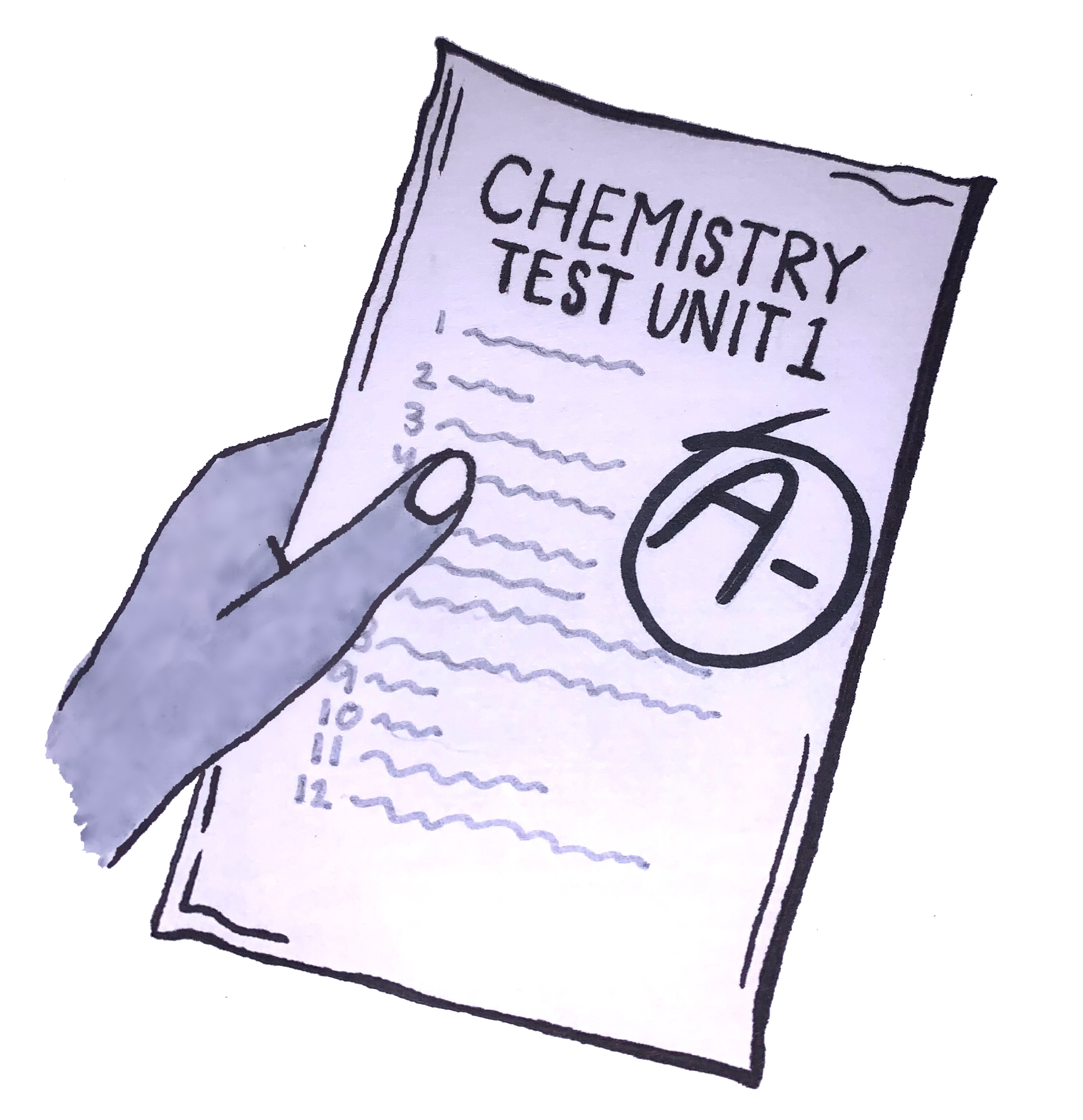

Aragon’s chemistry and physics classes have adapted to incorporate a new standard-based grading system. The system was introduced by Max Von Euw, the newest member of the science department, who used this grading system at his previous school.
The grading system involves a categorical exam system in which tests are worth 70-80% of a student’s grade and are divided into three skill sections, ascending in complexity: C, B and A sections. Test questions are formulated from unit rubrics given to the students, and every test has a retake opportunity.
In order to get an A on a test, students must answer at least 90% of the questions from each respective rubric category correctly. Students are only able to get a B if they answer correctly a minimum of 90% of the questions represented in the C category. Enough questions answered incorrectly in the C section will result in a 50%, or an F, no matter the raw scores in the A and B sections.
The reactions to the new grading system have been mixed, as it affects individual students differently.
“I think the new grading system is … really harmful,” said sophomore Amelia Gullo. “[Students] should be graded on what you know as a whole, not whether you know certain information.”
“I see less Ds and Fs… But I also see fewer As [since] it’s harder to earn that A”
While the new grading system may be a change from what students are used to, it may have benefits as well as its drawbacks.
“I think it helps in some aspects with the stuff you’re weak with,” said sophomore George Schmidt. “But if you’re strong in one area, but do terribly in another, it doesn’t help, so it’s sort of a double-edged sword.”
Teachers like the categorical aspect of the grading system because it divides academic skills and allows students to choose which skill level they will aim to reach.
“Once you pass this class with a C, there are certain skills that we want you to have,” Von Euw said. “If you want a B, there are more skills or the skills become more complex, and if you want an A that means … you should be amazing at chemistry.”
Physics teacher Steve Ratto shared a similar idea regarding the different standards students are held to and the motivations that teachers have when implementing it.
“What this allows us to do is it allows us to see growth from the first test to the last test,” Ratto said. “That can be as important as overall knowledge.”
Some students acknowledge the merits of this approach to learning.
“The teacher that I have … tells us what you have to know specifically to earn a C, A [or] B … depending on … what [grade] you want to get, and … how much you want to study,” said sophomore Sara Lyon. “I feel like that part is helpful.”
Many students, though, view the tiered exam system as unfair in assessing their knowledge.
“Let’s say you know everything on the A and B section … which means you’re pretty knowledgeable,” said sophomore Kevin Vigil. “You get … one question wrong … or [make a] stupid mistake, then you lose 30% on the whole thing, even though you knew a good amount [and] some of the more challenging stuff about the actual subject.”
Along with being able to see potential improvement, teachers have noticed a similar trend in the grades of their students after the implementation of the grading system.
“When I’ve used this system, I see less Ds and Fs,” Von Euw said. “But I also see fewer As [since] it’s harder to earn that A.”
Ratto believes the grading system helps level the playing field.
Equity wise, you may come into the class with more … or less knowledge or more ability to have access to things,” said Ratto. “The goal is to give every student the opportunity to work within whatever they feel comfortable with.”
Despite some students’ concerns, the grading system ensures that to pass the course, a basic mastery of the subject’s different areas is necessary.




